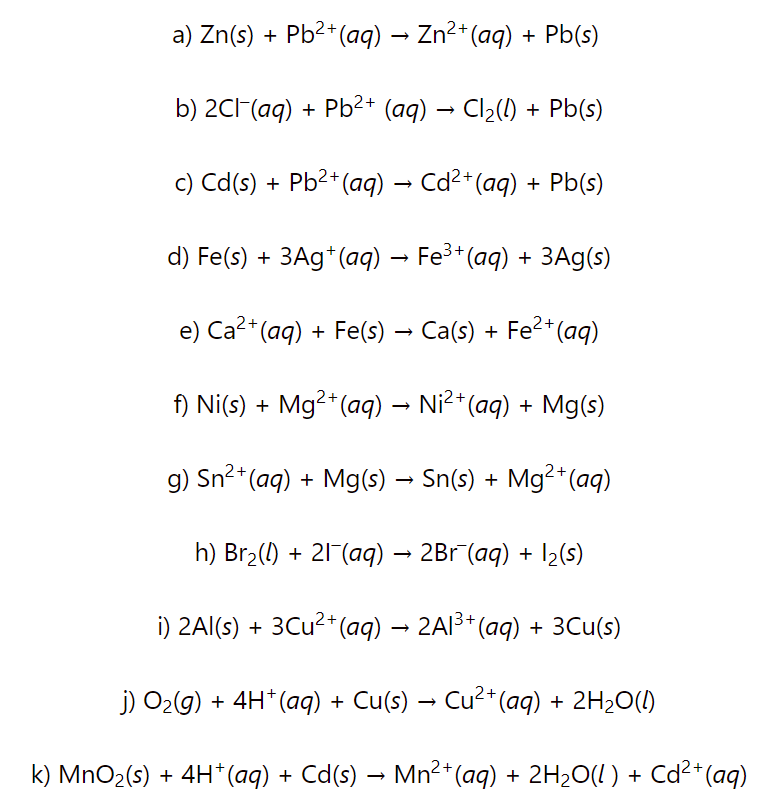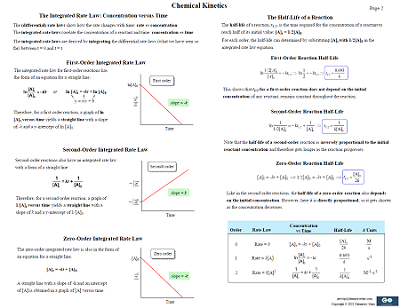Calculate the cell potential for each redox reaction and determine if it is spontanesous or not:
a) Zn(s) + Pb2+(aq) → Zn2+(aq) + Pb(s)
b) 2Cl–(aq) + Pb2+ (aq) → Cl2(l) + Pb(s)
c) Cd(s) + Pb2+(aq) → Cd2+(aq) + Pb(s)
d) Fe(s) + 3Ag+(aq) → Fe3+(aq) + 3Ag(s)
e) Ca2+(aq) + Fe(s) → Ca(s) + Fe2+(aq)
f) Ni(s) + Mg2+(aq) → Ni2+(aq) + Mg(s)
g) Sn2+(aq) + Mg(s) → Sn(s) + Mg2+(aq)
h) Br2(l) + 2I–(aq) → 2Br–(aq) + I2(s)
i) 2Al(s) + 3Cu2+(aq) → 2Al3+(aq) + 3Cu(s)
j) O2(g) + 4H+(aq) + Cu(s) → Cu2+(aq) + 2H2O(l)
k) MnO2(s) + 4H+(aq) + Cd(s) → Mn2+(aq) + 2H2O(l ) + Cd2+(aq)
To calculate the cell potential, we need to separate the reaction into half-reactions and look up the value for each cell potential in the table of standard reduction potentials.
This content is available to registered users only.
By joining Chemistry Steps, you will gain instant access to the Answers and Solutions for all the Practice Problems, Quizzes, and the powerful set of General Chemistry 1 and 2 Summary Study Guides.
Check Also
- Balancing Redox Reactions
- Galvanic Cells
- How to Calculate Standard Cell Potential
- The Correlation Between Eocell, ΔG°, and K
- Nernst Equation
- Nernst Equation Practice Problems
- Concentration Cells
- Electrolytic Cells
- Electrolysis
- Electrolysis of Water
- Calculating the Mass of Metal in Electroplating
- Cell Potential Practice Problems
- Eo, ΔGo, K – Practice Problems
- Electrochemistry Practice Problems
General Chemistry




